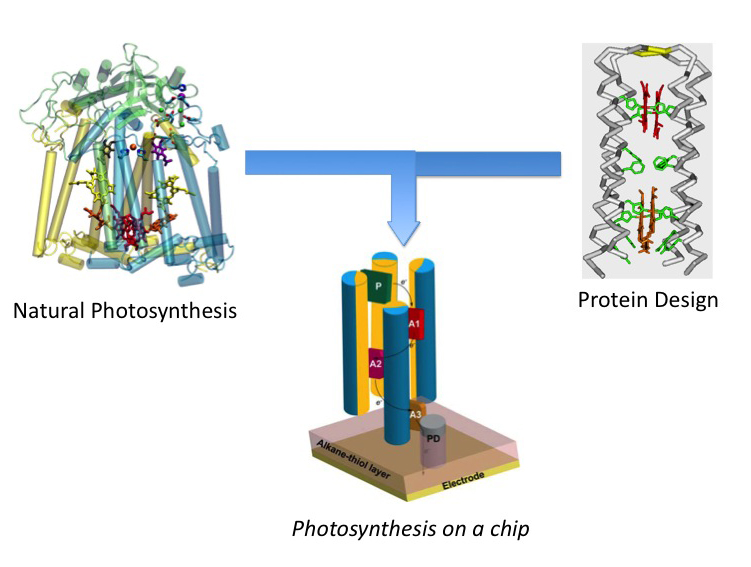
Heme Protein Research
Artificial Photosynthesis : Design of Biomimetic Solar Cells.

Heme proteins are one of the most versatile and visible class of proteins in biochemistry and serve functions ranging from oxygen transport to drug metabolism. With respect to heme proteins involved in cardiovascular disease and stroke, the Gibney laboratory is focused on understanding the structure-function relationships that are involved in the modulation of heme protein electrochemical properties that lead to the generation of damaging reactive oxygen species (ROS) resulting in oxidative stress. We design heme proteins, also called heme protein maquettes, from first principles to test the fundamental engineering principles of natural heme proteins, e.g. cytochromes, deoxymyoglobin and cytochrome c oxidase. Our main investigative approach is the equilibrium analysis of heme protein thermodynamics. This approach provides keen insight into how various factors influence the stability of ferric and ferrous heme proteins and modulate the resultant electrochemistry.
The Gibney Lab is currently collaborating with labs at the Karlsruhe Institute of Technology, the Migal Galilee Research Center and Aix Marseille Université on the European Union funded project PEPDIODE: Peptide-based Diode for Solar Cells. This research consortia is leveraging peptide-laser printer technology, de novo protein design experience, and a critical understanding of the engineering principles of photosynthesis to design a biomimetic solar cell.

